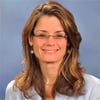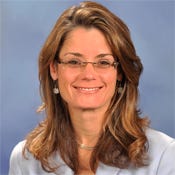Big Data Career Switch: 4 Key PointsBig Data Career Switch: 4 Key Points
Looking to retool your skillset to land a job in data science? Beware these issues as you consider university programs.

The U.S. has an employment problem. There are too many jobs and not enough workers … in data science.
You've probably seen the headlines: Data Scientist: The Sexiest Job of the 21st Century, In a Data Deluge, Companies Seek to Fill a New Role, Geeks Wanted -- Big Data Firms Push Data Scientist Development.
But if you graduated from college more than five years ago and you're not in a data science position right now, you probably don't have the skills that are required to apply for most of these positions. "Fair enough," I hear you saying. "I can retool my skillset … there are lots of programs in data science to choose from." Yes, but…
[ Check out these one- and two-year graduate programs in data analytics. Big Data Analytics Master's Degrees: 20 Top Programs. ]
Less than a year ago, I wrote in this publication that universities needed to pivot to better meet the needs of the market. Specifically, a year ago, you would have been hard-pressed to find a university curriculum aligned with data science. Today the educational landscape looks very different. With this shifting landscape, there's good news and bad news.
First, the good news: Some very strong university (and non-university) programs have partnered with organizations native to big data and to data science and are bringing practical, real skills into the classroom. (Perhaps those universities read my article.) These programs have risen to the top and produce highly sought-after graduates. And they're constantly getting better as we learn how to tame the issues related to big data and bring these insights into the classroom. Some leading programs include Stanford, NC State, Texas A&M, Kennesaw State University, Oklahoma State University, Arizona State University and Central Florida, to name just a few.
The bad news? Some educational institutions are misrepresenting their curricula as data science. Most are doing so inadvertently, because they don't appreciate how different the discipline is from anything that has historically come from universities. Regardless, not all data science programs are created equal. A lot of programs out there are posing as data science but are not.
Here are a few important points to ponder as you consider pursuing a degree in data science:
Content. What is data science? The definition is still a slightly moving target, but most practitioners cite a few common characteristics: a strong grounding in mathematics; a familiarity with programming languages; a working knowledge of analytical modeling; and some area content knowledge -- all combined with an innate sense of curiosity. (As an academic, I am still struggling with how to teach people to become curious, because it is so important.) The fact that all these characteristics should be present in some form in any program using the label of "data science" explains why so many MBAs are having difficulty finding positions. About a quarter of the people who apply to our MS program in Applied Statistics already have an MBA, but no job.
Partnerships with native organizations. Let's be honest -- there are no professors of data science. No matter what we say or how we try to spin our degrees, no one with a Ph.D. teaching in a university today is a professor of data science. The concepts and the discipline are too new and have come upon us too quickly. Unless you are a professor who has had 1 1/2 feet in an organization that is native to big data and to data science over the last three years (and there are a few), you'll be hard-pressed to truly teach data science. That's why the best programs out there -- including those listed above -- have strong partnerships with companies who are living the challenges of big data and, in many cases, are growing their own data scientists. The best university programs have recognized their limitations in this space and have partnered with local professionals to come into the classroom and speak to the challenges and the real problems that are all part of working with big data.
Online versus traditional. There are more online data science programs than traditional university ones. Online programs serve an important educational role, and some of them are excellent. Online programs can also be synchronous -- meaning that the sessions are scheduled and live -- or asynchronous -- meaning that the sessions are pre-recorded and can be experienced on demand. While the on-demand option is certainly the most convenient, it also requires the most self-discipline. For people who have been working in an analytical capacity and need to pick up skills in Hadoop, for example, an online program probably makes sense. However, people coming to data science for the first time, from a less analytical position, would likely benefit from the direct contact with practitioners and with other students in the classroom.
Application. In his brilliant Last Lecture, the late Dr. Randy Pausch described his first iteration of the curriculum for the MS in Entertainment Technology at Carnegie Mellon basically as all applied projects. Although the university required Dr. Pausch to incorporate some "real" classes, the popular degree program has maintained its very strong application orientation -- students spend 90% of their time in hands-on applied projects. Data science is, by definition, applied. It has to be. Therefore, any program representing itself as data science should have a strong applied -- as opposed to a theoretical -- orientation. And again, the best programs have co-ops and internships with companies that represent the front line of learning what working with big, messy data is all about.
Dr. Jennifer Priestley is an associate professor of statistics at Kennesaw State University, where she is the director of the Center for Statistics and Analytical Services. She also oversees the undergraduate curriculum in statistics and was recognized by the SAS Institute as the 2012 Distinguished Statistics Professor of the Year. She served as the co-chair of the 2012 National Analytics Conference in Las Vegas, NV.
About the Author
You May Also Like






